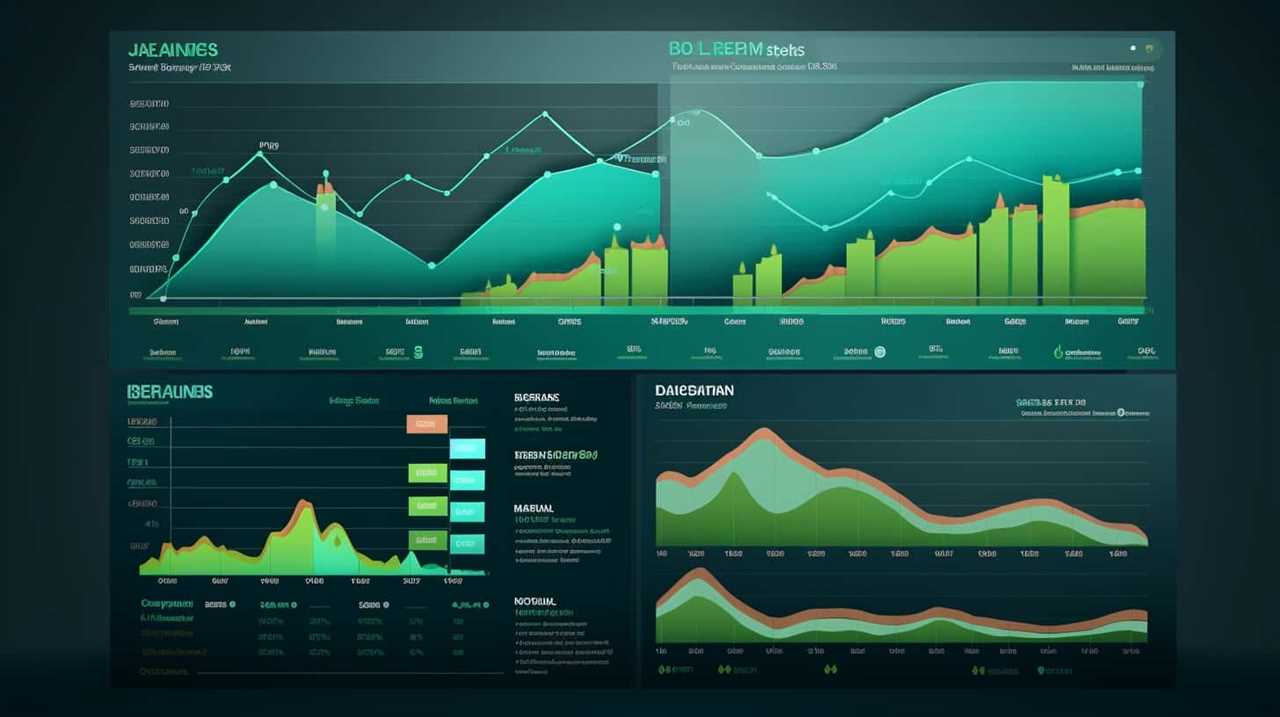Are you ready to delve into the complexities of long-tail keywords?
We, the masters of optimization, invite you to unlock the secrets that will propel your online presence to new heights.
Our proven techniques will guide you through thorough keyword research, content integration, and on-page optimization.
By tracking and analyzing the performance of these keywords, you’ll achieve mastery over your online strategy.

Join us on this journey of discovery, as we reveal the power of long tail keywords.
Key Takeaways
- Long tail keywords attract highly relevant traffic and increase the chances of reaching the intended audience.
- Keyword research tools like Google Keyword Planner, Moz Keyword Explorer, and SEMrush help identify relevant keywords with low competition and high search volume.
- Targeting niche keywords with less competition allows for higher rankings in search engine results.
- Regularly tracking and analyzing the performance of long tail keywords is crucial for ongoing optimization efforts.
Understanding Long Tail Keywords
One of the first steps in optimizing our website for search engines is understanding the importance of long tail keywords. Long tail keywords are specific phrases that are longer and more targeted than generic keywords. They play a crucial role in attracting highly relevant traffic to our website. By targeting niche long tail keywords, we’ve a greater chance of reaching our intended audience and driving high-quality organic traffic.
To find high converting long tail keywords, we need to employ effective strategies. One strategy is to use keyword research tools to identify relevant keywords with low competition and high search volume. Additionally, analyzing competitor websites can provide insights into which long tail keywords are driving traffic to their sites. By understanding the strategies for finding high converting long tail keywords, we can optimize our content and increase our chances of ranking higher in search engine results.
Now that we’ve a grasp of the importance of long tail keywords and strategies for finding them, let’s dive into the next section on conducting thorough keyword research to further enhance our website’s optimization.

Conducting Thorough Keyword Research
To conduct thorough keyword research, we utilize various tools and techniques to identify relevant long tail keywords with low competition and high search volume. Effective tools for keyword research include Google Keyword Planner, Moz Keyword Explorer, and SEMrush. These tools provide insights into search volume, competition, and related keywords, helping us identify potential long tail keywords to target. Additionally, we employ techniques such as competitor analysis, customer surveys, and social media listening to uncover niche keywords that our target audience is actively searching for. Targeting niche keywords is crucial because they have less competition, allowing us to rank higher in search engine results and attract highly targeted traffic to our website. By combining these tools and techniques, we can conduct comprehensive keyword research that maximizes our SEO efforts.
| Tools for Keyword Research | Techniques for Keyword Research |
|---|---|
| Google Keyword Planner | Competitor Analysis |
| Moz Keyword Explorer | Customer Surveys |
| SEMrush | Social Media Listening |
Incorporating Long Tail Keywords Into Your Content
We incorporate long tail keywords into our content by optimizing our website and creating targeted, engaging blog posts. Effective strategies for targeting long tail keywords involve conducting thorough keyword research, understanding the intent behind the search queries, and analyzing the competition.
By focusing on specific, niche topics and using long tail keywords naturally in our content, we can attract highly relevant organic traffic. Best practices for incorporating long tail keywords in your SEO strategy include including them in page titles, headings, meta descriptions, and image alt tags. It’s also important to create high-quality, informative content that answers the users’ questions and provides value.
Optimizing On-Page Elements for Long Tail Keywords
To optimize on-page elements for long tail keywords, our team focuses on implementing strategic techniques that enhance visibility and drive targeted traffic. When it comes to meta tags, it’s crucial to include long tail keywords in the title tag, meta description, and meta keywords. These tags provide important information to search engines and help them understand the relevance of your content to specific queries.

Additionally, optimizing headings is essential for long tail keyword optimization. By incorporating long tail keywords into your headings, such as H1 and H2 tags, you can improve the visibility and relevance of your content to both search engines and users. By strategically optimizing these on-page elements, you can increase your chances of ranking higher in search results and attracting qualified traffic.
Now, let’s move on to tracking and analyzing the performance of long tail keywords.
TRANSITION: Now that we’ve optimized our on-page elements, it’s time to track and analyze the performance of our long tail keywords.
Tracking and Analyzing the Performance of Long Tail Keywords
Now that we’ve optimized our on-page elements, it’s time to regularly track and analyze the performance of our long tail keywords.
Measuring the impact of long tail keywords on organic search traffic is crucial for understanding their effectiveness and making informed optimizations. By monitoring the performance of these keywords, we can identify trends, spot opportunities, and make data-driven decisions to improve our SEO strategy.

Additionally, tracking the performance of long tail keywords helps us identify high converting keywords that are driving valuable traffic to our website. By focusing on these keywords, we can further optimize our content and attract more qualified leads.
Regularly analyzing the performance of long tail keywords is essential for achieving success in organic search and maximizing the ROI of our SEO efforts.
Frequently Asked Questions
What Are the Benefits of Using Long Tail Keywords in Seo?
Using long tail keywords in SEO has many benefits. They drive targeted traffic and have a positive impact on conversion rates. Incorporating these keywords is crucial for optimizing your website and reaching your desired audience.
How Do I Determine the Competitiveness of a Long Tail Keyword?
Determining the competitiveness of a long tail keyword is vital for effective SEO. We’ll share strategies for targeting less competitive long tail keywords and explain how keyword competitiveness impacts SEO results.

Can I Use Long Tail Keywords in My Website’s Meta Tags?
Yes, you can use long tail keywords in your website’s meta tags. It is one of the effective strategies for optimizing your website’s SEO. However, be careful to avoid common mistakes when incorporating them.
Are There Any Tools Available to Help Track the Performance of Long Tail Keywords?
Yes, there are keyword tracking tools available that can help us monitor the performance of long tail keywords. By utilizing these tools, we can implement best practices for optimizing long tail keywords more effectively.
How Often Should I Update My Content With New Long Tail Keywords?
Updating content with new long tail keywords should be done regularly to ensure maximum search engine visibility. We can share effective strategies for incorporating these keywords into existing content and best practices for optimizing website content.
Conclusion
Unlock the secrets of long tail keywords and optimize your content to reach new heights!

By conducting thorough keyword research and incorporating these targeted phrases into your content, you can attract a highly engaged audience.
Don’t forget to optimize your on-page elements for long tail keywords and track their performance to continuously improve your strategy.
With these optimization techniques, you’ll be able to unlock the full potential of long tail keywords and boost your website’s visibility and success.
Start implementing these strategies today and watch your online presence soar!











